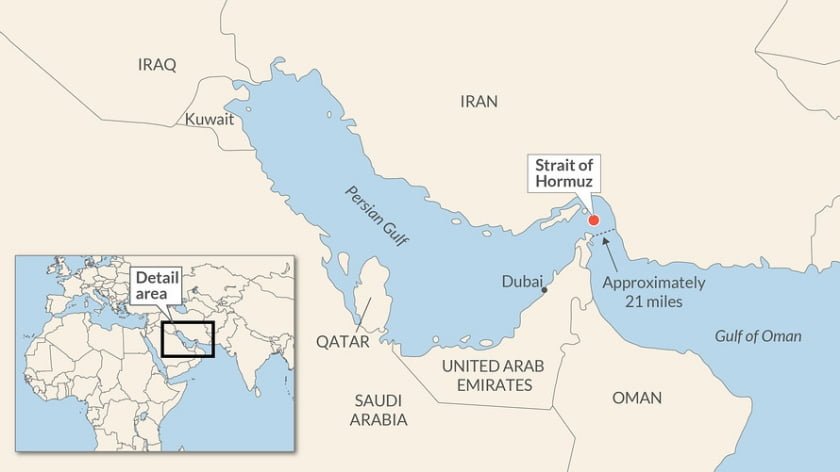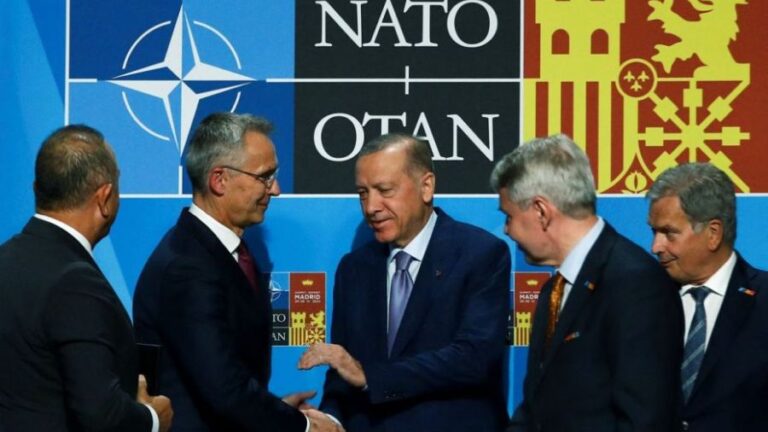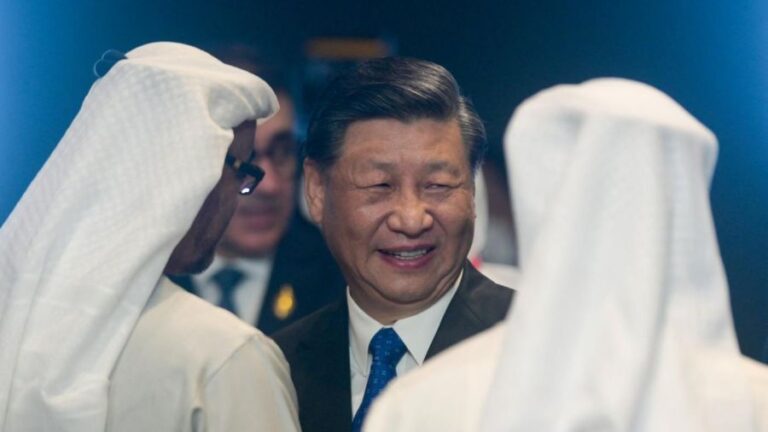How Yesterday Resembles Today: Iran Confronted the US in the Straits of Hormuz in the 1980s
“We are going to intercept and stop all oil exports from the (Middle East) region if we are prevented from exporting our oil. We shall take every measure possible to close the Straits of Hormuz. If the US aims – by sending jets, carriers – to reinforce its positions and status among the international community, it doesn’t concern us. But if the US is seriously aiming to threaten us, it should know that not one drop of oil will leave the region and we shall destroy all US interests in the Middle East”. This is what the President Grand Ayatollah Sayyed Ali Khamenei said in 1983, in response to the US President Ronald Regan’s decision to send jet carriers to the Middle East during the Iran-Iraq war. It seems like only yesterday.
Today, in 2019, the experienced and veteran leader of the revolution, Sayyed Khamenei – who played a role in the very similar critical situation in the 80s – is facing President Donald Trump and an administration who seem not to have learned much from history and the previous US-Iran confrontation. Looking at past foreign policy with a critical eye seems not to be part of the current US administration’s practice. A small reminder may give many answers to what Trump can expect in a wider confrontation with Iran.
In the 80s, Iran’s “Islamic Revolution” was facing serious problems on many levels. Its armed forces were disorganised and dispersed; there were serious differences between decision-makers and politicians over how to run the country following the fall of the Shah; domestic security was lacking; there were ethnic and national struggles; no country was ready to sell weapons to Iran; the US, Europe and the Gulf states supported Saddam Hussein’s aggression against Iran; and the country was going through serious economic difficulties.
It was a perfect scenario for Saddam Hussein to invade Iran, which he did in September 1980 by bombing Mehrabad international airport and occupied later Khorramshahr, calling for an uprising of ethnic Arabs “in al-Muhammara”. This same objective, and concomitant regime-change is what the US administration has been aiming at since 1979- and it apparently retains the same fixation in 2019.
Many may not remember that Imam Khomeini did not hesitate to encourage the Iranian leadership, led by the current Rahbar (Spiritual Leader) Sayyed Ali Khamenei (1987), who was the President of Iran then, to confront and open fire against US forces or indeed any hostile country sailing in the Gulf. “If I were you (addressing his speech to the political leadership), I would order the armed forces to target the first vessel protecting an oil carrier trying to cross the Straits of Hormuz. You decide what you think best (as a course of action), whatever it takes”, said Imam Khomeini.
Ayatollah Ali Khamenei (and Sheikh Hashemi Rafsanjani) gave immediate orders to the armed forces to act accordingly. All armed forces were fully coordinated with the Iranian Revolutionary Guard Forces (IRGC – Pasdaran). Iran launched Chinese-made Silkworm missiles on Kuwait port al-Ahmadi. Another attack was registered on a Kuwaiti oil tanker that had been registered to fly the American flag and was sailing under US Navy protection- it hit an Iranian mine in the Gulf. Moreover, Iran shot down a US helicopter using US-made Stinger missiles delivered by the Afghan Mujahedeen to Iran. It was ready to take the confrontation further in the Persian Gulf, careless of the US “almighty” military power. Iran also attacked a Soviet vessel, the freighter Ivan Korotoyev, sailing in the Gulf and providing naval escorts for its ships.
It was rare to see the two superpowers, the US and Russia, united against Iran in one Middle Eastern conflict, in support of Saddam Hussein. Of course, Iran’s diplomacy skills were not yet sharpened. It was helping the Afghans against the Soviets and was committed to fighting US hegemony in the Middle East.
Sayyed Ali Khamenei went to New York, and at the UN Security Council told the world that “the US will receive a response to its hideous action” in the Gulf (following a US attack against an Iranian commercial ship called Iran Ajr). Indeed, a US owned giant oil tanker carrying the name of Sungari was attacked and set ablaze by the IRGC. Iran was not willing to stand down, but instead showed itself ready to confront two superpower countries at a time when Tehran was in its worst condition.
Today, Iran is well equipped with all kinds of missiles, and is a more powerful, highly productive country with strong and efficient allies who can hurt its enemies much more than in 1987. The Islamic Revolution principles and values are still the same, led by more or less the same people. The IRGC is stronger than ever and is an integrated part of the armed forces.
Sayyed Ali Khamenei was fully devoted to Imam Khomeini. He served as a faithful guardian of the “Islamic Revolution”, supervised the IRGC, represented Imam Khomeini at the Security Council and played an effective role in arming and merging the IRGC into all levels of the country’s armed forces. He will not hesitate to take further steps against any weakness any leader in the country today might show in trying to soften the relationship with the US. Today, the leader of the Revolution is neither afraid of war, nor of peace. He will not negotiate with Trump and will not help him be re-elected in 2020. Those who think Iran is desperate or cornered or failing due to the US sanctions may need to read more carefully the history and behaviour of the “Islamic Revolution” since 1979.
By Elijah J. Magnier
Source: Elijah J. Magnier








